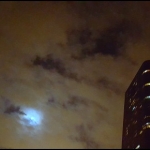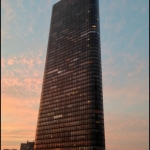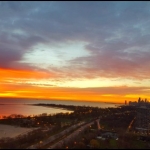Foggy or Icy Windows? You’re not alone…
January 4, 2018
It is not uncommon or abnormal this time of year, during this type of weather conditions. Condensation, frost, dripping, sunny outside/cloudy inside, even complaints of leaking from the neighbor below….depending on the temperature outside and the humidity in your unit, this could impair your winter season view and even cause leaking!
WINDOW CONDENSATION TIPS
It is not uncommon during the fall and winter for us to receive inquiries about condensation and ice on windows. Condensation is a function of exterior temperature versus interior temperature and interior relative humidity; when the glass becomes cold from the outdoor weather, the relatively warm and humid indoor air tends to condense on the windows – in extreme cold weather it will even form ice and frost. This is a challenging problem – especially in winter – it can obstruct your view and cause leaking that may even lead to damage in yours and neighboring units. There are a couple of things you can do to lower the condensation in your unit:
- ABSOLUTELY DO NOT HUMIDIFY – This is difficult for many of us, especially if you need a humidifier to help with any health conditions or dry skin, but if you are getting puddles of water, running a humidifier could cause serious leaking. A fan can help, because the movement of the air can help warm the surface of the glass and help reduce condensation from forming – theoretically that moisture then remains in the air in your unit.
- LOWER THE TEMPERATURE IN YOUR UNIT – This too can be difficult, but if the condensation is really bothering you during very cold weather, lowering the temps a couple degrees can help a bit (and save energy at the same time). Cooler air holds less water. Grab a blanket or your favorite sweater, and see if you can manage it a few degrees lower. Obviously this is easier to do in units where the owner has upgraded the HVAC by installing a Thermostat.
- LOWER THE TEMPERATURE AND SHORTEN THE LENGTH OF YOUR SHOWER OR BATH – Even a few degrees less than normal can put off exponentially less steam and humidity into the air, which would otherwise circulate to the windows and other cold surfaces, causing condensation. And make it quick – the more time the water is exposed to the air, the more evaporation and the more humidity. (And, besides, saving water these days is a benefit to everyone.)
- NO PASTA OR RICE! – This is especially tough for some, we know. But avoid cooking foods that require either boiling water, or result in a great deal of moisture evaporation and steam.
- KEEP YOUR SHADES OR BLINDS OPEN – as much as possible. When they are closed it creates a micro-climate between the shade and the curtain wall where air will not circulate. When open, more are can circulate over the metal and glass keeping it warmer than if the shades were closed. This too is difficult, especially for those who get a sunrise view, when you like to sleep in!
- CHANGE DIRECTION OF YOUR AIR FLOW – Each winter spin the plastic vent pieces on the HVAC units to face the windows. When the unit is on the air hits the windows, improving circulation over them and helps prevent frost and condensation. There might be some frost along the edges of the windows in your unit, but not wall-to-wall as it would otherwise be. Come spring, twist them back to point into the room for more efficient cooling.
If you are suffering from excessive condensation – particularly during frigid outdoor weather – try experimenting with a combination of these suggestions and you should experience at least some relief.








